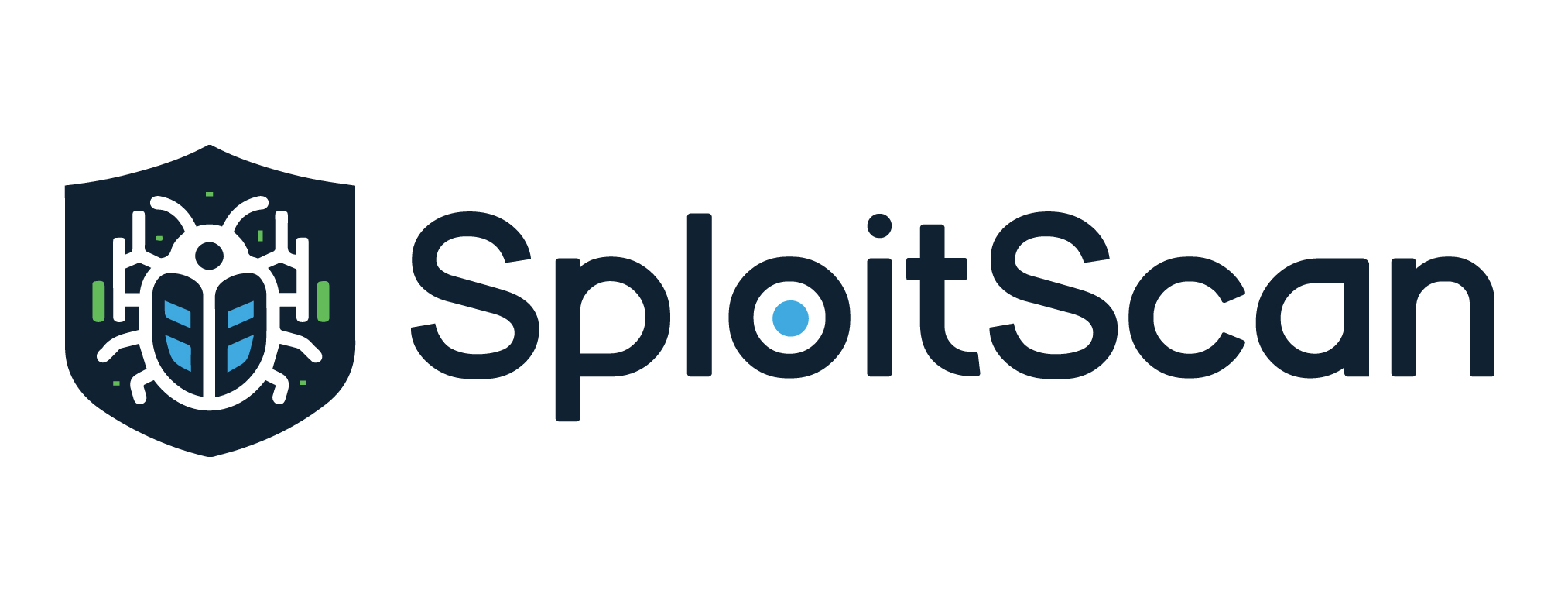
SploitScan 是一款功能強大且使用者友好的工具,旨在簡化識別已知漏洞的利用及其各自的利用機率的過程。使網路安全專業人員能夠快速識別和應用已知的漏洞並進行測試。對於尋求增強安全措施或針對新出現的威脅制定強大的偵測策略的專業人士來說,它尤其有價值。
描述
特徵
支援的漏洞利用資料庫
支援的漏洞掃描程式導入
安裝
用法
人工智慧驅動的風險評估
補丁優先系統
貢獻
作者
變更日誌
參考
CVE 資訊檢索:從國家漏洞資料庫中取得 CVE 詳細資訊。
EPSS 整合:包括利用預測評分系統 (EPSS) 數據,提供 CVE 利用可能性的機率評分,有助於確定優先順序。
公共漏洞聚合:收集公開可用的漏洞,增強對漏洞的理解。
CISA KEV :顯示 CVE 是否已列在 CISA 的已知利用漏洞 (KEV) 中。
AI 支援的風險評估:利用 OpenAI 提供詳細的風險評估、潛在攻擊場景、緩解建議和執行摘要。
HackerOne 報告:顯示 CVE 是否在 HackerOne Bug Bounty 計劃中使用,包括其總排名和嚴重性分佈。
修補優先系統:根據各種因素(包括公共漏洞利用可用性)評估並分配修補優先順序。
多 CVE 支援和匯出選項:在一次運行中支援多個 CVE,並允許將結果匯出為 HTML、JSON 和 CSV 格式。
漏洞掃描程式匯入:從流行的漏洞掃描程式匯入漏洞掃描並直接搜尋已知漏洞。
精細方法選擇:僅選擇特定方法(例如cisa 、 epss 、 hackerone 、 ai等),讓您控制要擷取的資料。
使用者友善的介面:易於使用,提供清晰簡潔的資訊。
全面的安全工具:快速安全評估和隨時了解最新漏洞的理想選擇。
GitHub
利用資料庫
VulnCheck (需要免費的VulnCheck API 金鑰)
資料包風暴
細胞核
內瑟斯 (.nessus)
Nexpose (.xml)
OpenVAS (.xml)
Docker (.json)
git 克隆 https://github.com/xaitax/SploitScan.gitcd sploitscan pip install -r 要求.txt
pip install --user sploitscan
apt安裝sploitscan
VulnCheck :在 VulnCheck 註冊免費帳戶以取得 API 金鑰。
OpenAI :在 OpenAI 上建立帳戶並取得 API 金鑰。
注意:OpenAI 和 VulnCheck API 金鑰是可選的。 OpenAI API 金鑰用於人工智慧驅動的風險評估,VulnCheck API 金鑰用於 VulnCheck 資料檢索。如果您不打算使用這些功能,可以省略設定檔或將 API 金鑰欄位留空。
使用您的 API 金鑰在以下位置之一建立config.json檔案:
目前目錄
~/.sploitscan/
~/.config/sploitscan/
/etc/sploitscan/
~/Library/Application Support/sploitscan/ (macOS)
%APPDATA%/sploitscan/ (Windows)
您也可以使用--config或-c命令列參數指定自訂設定檔路徑。
{“vulncheck_api_key”:“your_vulncheck_api_key”,“openai_api_key”:“your_openai_api_key”}$ sploitscan.py -h ███████╗██████╗██╗██████╗████ █╗ █████╗ ███╗ ██╗ ██╔════╝██╔══██╗██║ ██╔═══██╗██║╕═␕琕␕␕琕␕琕␕␕␕ ╔════╝██╔══██╗████╗██║ ███████╗██████╔╝██║ ██║ ██║██║ ██║ ███████╗██║ █████ ██╔██╗ ██║ ╚════██║██╔═══╝。 █║╚██╗██║ ███████║██║ ███████╗╚██████╔╝。 ██║ ██║██║ ╚████║ ╚══════╝╚═╝╚══════╝╚═══ ╚═════╝╚═╝ ╚═╝╚═╝╚═══╝ v0.11.0 / 亞歷山大·哈格納 / @xaitax / [email protected] 用法: sploitscan.py [-h] [-e {json,JSON,csv,CSV,html,HTML}] [-t {nessus,nexpose,openvas,docker}] [-m 方法] [-i IMPORT_FILE] [ -c CONFIG] [-d] [cve_ids ...] SploitScan:檢索並顯示漏洞資料以及給定 CVE ID 的公共漏洞利用。 位置參數: cve_ids 輸入一個或多個 CVE ID 以取得資料。用空格分隔多個 CVE ID。每個 ID 的格式:CVE-YYYY-NNNNN。如果提供了匯入文件,則此參數是可選的 使用 -i 選項。 選項: -h, --help 顯示此說明訊息並退出 -e {json,JSON,csv,CSV,html,HTML}, --export {json,JSON,csv,CSV,html,HTML} 可選:將結果匯出到 JSON、CSV 或 HTML 檔案。指定格式:「json」、「csv」或「html」。 -t {nessus,nexpose,openvas,docker}, --type {nessus,nexpose,openvas,docker} 指定匯入檔案的類型:「nessus」、「nexpose」、「openvas」或「docker」。 -m 方法,--方法方法 指定要運行的方法,以逗號分隔。選項:'cisa'、'epss'、'hackerone'、'ai'、'prio'、'references' 等。 -i IMPORT_FILE, --導入檔案 IMPORT_FILE 來自漏洞掃描程式的匯入檔案的路徑。如果使用,CVE ID 可以從命令列參數中省略。 -c 配置,--config 配置 自訂設定檔的路徑。 -d, --debug 啟用偵錯輸出。
漏洞掃描 CVE-2024-1709
sploitscan CVE-2024-1709 CVE-2024-21413
指定類型:「nessus」、「nexpose」、「openvas」或「docker」並提供檔案路徑。
sploitscan --導入檔案路徑/to/yourfile.nessus --type nessus
若要僅執行特定的資料檢索方法(例如,CISA、EPSS、AI 風險評估),請使用-m參數:
sploitscan CVE-2024-1709 -m cisa,epss
指定匯出格式:「json」、「csv」或「html」。
sploitscan CVE-2024-1709 -e html
確保您已安裝 Docker。安裝說明請參閱Docker官方安裝指南。
在 Docker 中建置並運行 SploitScan:
docker build -t sploitscan .docker run --rm sploitscan CVE-2024-1709
從目前目錄安裝卷
docker run -v ${PWD}:/app --rm sploitscan CVE-2024-1709 -e JSONdocker run -v $(pwd):/app --rm sploitscan CVE-2024-1709 -e JSON
SploitScan 與 OpenAI 集成,為每個 CVE 提供全面的人工智慧驅動的風險評估。該功能包括:
詳細的風險評估:了解漏洞的性質及其業務影響。
潛在攻擊場景:取得利用漏洞的潛在攻擊場景的描述。
緩解建議:接收具體的、可操作的建議以緩解風險。
執行摘要:非技術利害關係人可以理解的簡明摘要,強調業務影響和緊迫性。
$ sploitscan.py CVE-2024-21413
[...]
┌───[ ? AI-Powered Risk Assessment ]
|
| 1. Risk Assessment
| -------------------
| The vulnerability identified by CVE-2024-21413 is a critical remote code execution flaw in
| Microsoft Outlook with a CVSS score of 9.8. The impact on business operations can be severe due to
| its high potential to be exploited over a network without any user interactions or elevated
| privileges. This unvalidated input vulnerability (CWE-20) could allow an attacker to execute
| arbitrary code on the target system, thereby compromising the confidentiality, integrity, and
| availability of critical business data and systems. Given its critical rating and the existence of
| multiple exploits on public repositories like GitHub, the likelihood of exploitation is very high.
| This necessitates immediate attention from the security teams to mitigate the risks associated.
|
| 2. Potential Attack Scenarios
| ------------------------------
| An attacker could exploit this vulnerability by sending a specially crafted email to a victim
| using Microsoft Outlook. Once the email is opened or previewed, the malicious payload would
| execute, allowing the attacker to gain control over the victim's system. The process involves: 1.
| Crafting a malicious email leveraging the specific flaw in email handling within Microsoft
| Outlook. 2. Sending the email to the intended victim. 3. Upon opening or previewing the email, the
| victim’s system executes the malicious code. The potential outcomes of this attack include theft
| of sensitive information, installation of malware or ransomware, and compromising other systems
| within the same network due to lateral movement capabilities.
|
| 3. Mitigation Recommendations
| ------------------------------
| Immediate mitigation recommendation includes: 1. Applying the latest security patches provided by
| Microsoft. Reference: https://msrc.microsoft.com/update-guide/vulnerability/CVE-2024-21413 2.
| Implementing network-level protections such as email filtering and network segmentation to limit
| the spread of potential infections. 3. Conducting regular security awareness training for users to
| recognize phishing and malicious emails. 4. Monitoring network and system activity for signs of
| suspicious behavior and unauthorized execution. 5. Regularly backing up critical data and ensuring
| the integrity of backups.
|
| 4. Executive Summary
| ---------------------
| CVE-2024-21413, a critical remote code execution vulnerability in Microsoft Outlook, poses a
| significant risk to businesses due to its potential to be exploited without user interaction.
| Multiple exploit proofs are publicly available, increasing the likelihood of attacks.
| Organizations must act swiftly by applying the necessary patches from Microsoft, enhancing their
| email security protocols, and educating their staff to identify potential phishing attempts.
| Mitigating this vulnerability is essential to protect sensitive information, maintain business
| integrity, and ensure system availability, thus preventing potential financial and reputational
| damage. Immediate action is crucial to safeguard the organization against this severe threat.
|
└────────────────────────────────────────SploitScan 中的修補程式優先系統提供了一種根據漏洞的嚴重性和可利用性對安全性修補程式進行優先排序的策略方法。它受到 CVE Prioritizer 模型的影響,並增強了處理公開可用漏洞的功能。它的工作原理如下:
A+ 優先:分配給 CISA 的 KEV 中列出的 CVE 或具有公開可用漏洞的 CVE。這反映了修補的最高風險和緊迫性。
A 到 D 優先權:基於 CVSS 分數和 EPSS 機率百分比的組合。決策矩陣如下:
答:CVSS 分數 >= 6.0,EPSS 分數 >= 0.2。嚴重性高,被利用的可能性很大。
B:CVSS 分數 >= 6.0,但 EPSS 分數 < 0.2。嚴重性高,但被利用的可能性較低。
C:CVSS 分數 < 6.0 且 EPSS 分數 >= 0.2。嚴重程度較低,但被利用的可能性較高。
D:CVSS 評分 < 6.0,EPSS 評分 < 0.2。嚴重程度較低,被利用的可能性也較低。
該系統可協助使用者在考慮其潛在影響和被利用的可能性的情況下,就首先修補哪些漏洞做出明智的決定。可以根據您的業務需求變更閾值。
歡迎貢獻!無論是修復錯誤、添加新功能還是改進文檔,都可以隨意分叉儲存庫並提交拉取請求。您也可以透過 GitHub 問題追蹤器報告問題或提出改進建議。
特別感謝:
Nilsonfsilva 對 Debian 打包的支持。
錯誤修正的 bcoles。
哈維爾·阿爾瓦雷斯修復了錯誤。
羅穆洛的想法和建議。
davidfortytwo 的增強功能(更新了 CVE 檢索和 PacketStorm 新增)。
conf-f-use 用於 setuptools/PyPi 的支援和修復。
Martijn Russchen 對 HackerOne GraphQL 的回饋與想法。
網址
嘰嘰喳喳
領英
有關更新、修復和新功能的詳細列表,請查看變更日誌。
CISA 已知被利用的漏洞目錄
CVE計劃
利用資料庫
第一個 EPSS
駭客一號
nomi-sec PoC-in-GitHub API
開放人工智慧
資料包風暴
專案發現核心
漏洞檢查